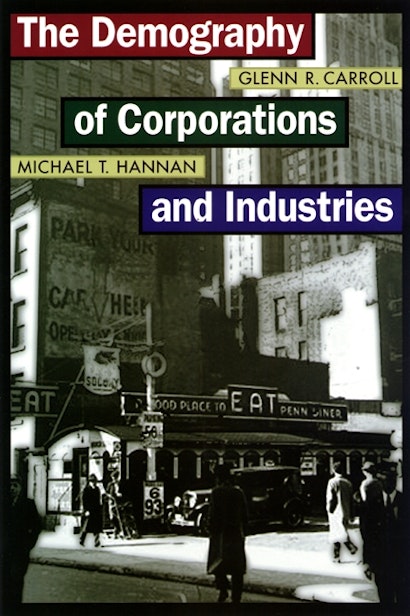Most analysts of corporations and industries adopt the focal perspective of a single prototypical organization. Many analysts also study corporations primarily in terms of their internal organizational structures or as complex systems of financial contracts. Glenn Carroll and Michael Hannan bring fresh insight to our understanding of corporations and the industries they comprise by looking beyond prototypical structures to focus on the range and diversity of organizations in their social and economic setting. The result is a rich rendering of analysis that portrays whole populations and communities of corporations.
The Demography of Corporations and Industries is the first book to present the demographic approach to organizational studies in its entirety. It examines the theory, models, methods, and data used in corporate demographic research. Carroll and Hannan explore the processes by which corporate populations change over time, including organizational founding, growth, decline, structural transformation, and mortality. They review and synthesize the major theoretical mechanisms of corporate demography, ranging from aging and size dependence to population segregation and density dependence. The book also explores some selected implications of corporate demography for public policy, including employment and regulation.
In this path-breaking book, Carroll and Hannan demonstrate why demographic research on corporations is important; describe how to conduct demographic research; specify fruitful areas of future research; and suggest how the demographic perspective can enrich the public discussion of issues surrounding the corporation in our constantly evolving industrial society. All researchers and analysts with an interest in this topic will find The Demography of Corporations and Industries an invaluable resource.
Awards and Recognition
- Glenn R. Carroll and Michael T. Hannan, Co-Winners of the 2002 Max Weber Award
Glenn R. Carroll is the Paul J. Cortese Distinguished Professor of Management at the Haas School of Business, University of California, Berkeley. Michael T. Hannan is the StrataCom Professor of Management and Professor of Sociology at Stanford University.
"Destined to become the standard reference . . . Caroll and Hannan admirably chronicle the first steps toward legitimizing organizational demography as a distinct specialist form."—David Knoke, American Journal of Sociology
"This is one of the most scientific textbooks in the field. . . . [It] serves as an (almost) ideal example for students and scholars alike, and it is highly relevant for nearly everybody interested in organizations, policy, management, strategy, and contingency. Students of modernity will also find much of interest."—Jeroen Bruggeman, Contemporary Sociology
"The Demography of Corporations and Industries [is] . . . the reference book on the subject."—Hallie J. Kintner, Population Studies
"A compelling contribution that is destined to be a mandatory addition to the bookshelves of the beginner and the advanced scholar and a testament to the vigor and reach of the ecological program of research."—Hayagreeva Rao, Administrative Science Quarterly
"The Demography of Corporations and Industries is an ambitious book. Originating in research on organizational ecology, the authors adopt a demographic perspective in which variety among firms within industries becomes the object of analysis. Vitality resides in the differences—which has important ramifications for organization theory and for public policy toward business. This book will influence research on organizations well into the new millennium."—Oliver Williamson, University of California, Berkeley
"Organizational ecology has for twenty years been among the most powerful paradigms for the study of organizations. This volume takes the next step, explicating clearly the tradition's demographic foundations, and elucidating its value for students of the firm. The Demography of Corporations and Industries will be an essential part of the libraries of organizational scholars in business schools and in departments of sociology and economics."—Paul J. DiMaggio, Princeton University
"This book promises to be the touchstone reference for many years on the demography of organizations."—Ronald S. Burt, University of Chicago
"The material in this book is virtually required reading for any serious course in organization studies."—Peter V. Marsden, Harvard University

